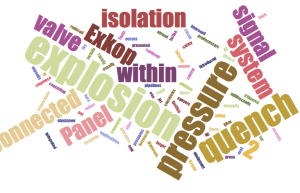Tanks, silos and equipment are usually connected by pipelines through which, if an explosion occurs, fire and the pressure spread very rapidly. In addition, the intensity of the explosion in connected containers is increased by pressure piling and flame jet ignition. This sequence of events can be prevented by the Exkop isolation system, consisting of a control panel and one or more quenc h valves. The integrated elastomer seal within the quench valve closes within a few milliseconds, triggered by a signal from the company’s Explosion Panel, Q-Rohr-3, Q-Box II, an infrared signal, or pressure or temperature sensors. The quench valve can be safely put back into operation again at the press of a button. The company recently introduced the new and improved Exkop isolation system, which expands to range of applications of its predecessors to include ST 2 dusts, reduced explosion pressures of up to 2 bars and larger diameters. — Rembe, Inc., Charlotte, N.C.
h valves. The integrated elastomer seal within the quench valve closes within a few milliseconds, triggered by a signal from the company’s Explosion Panel, Q-Rohr-3, Q-Box II, an infrared signal, or pressure or temperature sensors. The quench valve can be safely put back into operation again at the press of a button. The company recently introduced the new and improved Exkop isolation system, which expands to range of applications of its predecessors to include ST 2 dusts, reduced explosion pressures of up to 2 bars and larger diameters. — Rembe, Inc., Charlotte, N.C.